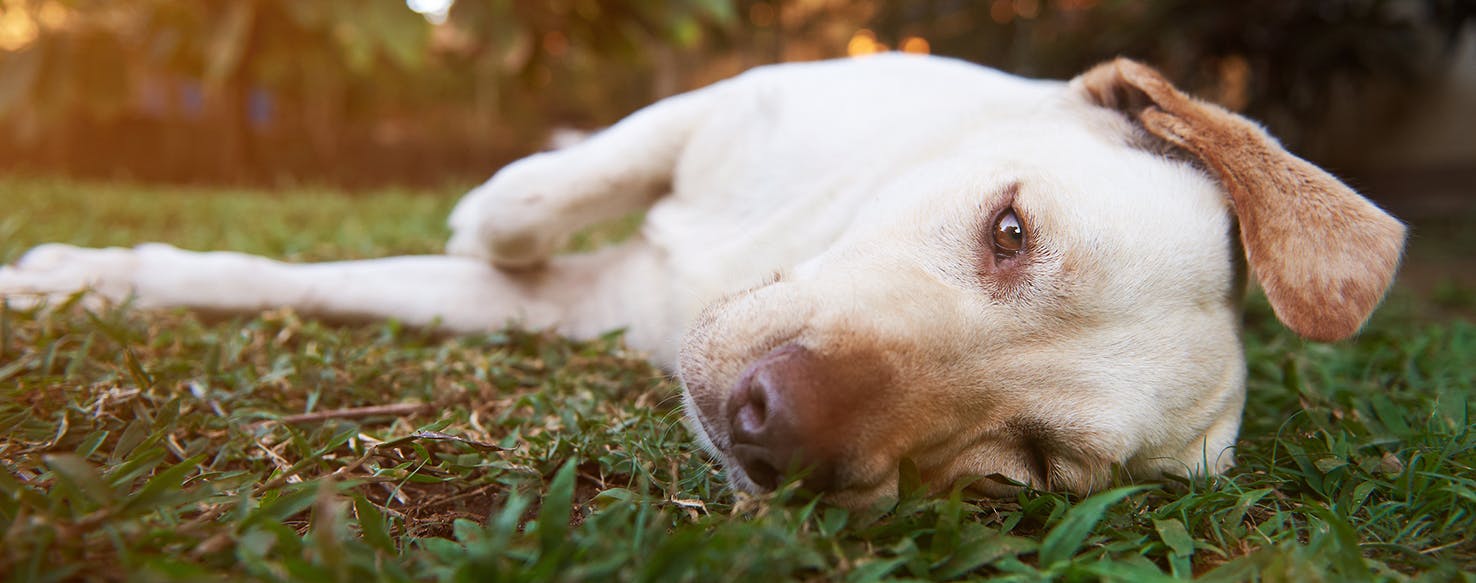- Home
- Dog Wellness
- Can Dogs Get a Hernia After Being Spayed?

By Darlene Stott
Published: 07/06/2017, edited: 09/07/2022
Save on pet insurance for your pet
You don't have to choose between your pet and your wallet when it comes to expensive vet visits. Prepare ahead of time for unexpected vet bills by finding the pawfect pet insurance.
Dogs can certainly get hernias after being spayed. At times, hernias can actually be a result of an improper healing process after being spayed, such as the animal overexerting themselves and tearing internal stitches along the abdominal wall. Because an ovariohysterectomy is successfully completed by removing female reproductive organs, there’s no reason why a hernia couldn’t potentially occur in spayed dogs.
A hernia is an internal tear in tissues and sometimes muscles. Because of this, they can go without being noticed. Occasionally, hernias aren’t dangerous or even painful. In the case of a hernia showing up after being spayed, these are usually more serious. If you notice a lump on your dog’s abdomen shortly after surgery, it could be part of the body healing itself and naturally-occurring inflammation taking place. However, if the lump seems to change in size and shape and is relatively soft to the touch, this is most likely a hernia and should be immediately checked out by a veterinarian.
Post-spaying hernias can develop as a result of improper surgical management by a veterinarian and/or staff. More common, however, is that the dog strains herself during a time of recovery, causing internal stitches to bust open.
Hernias are diagnosed radiographically. X-rays are the most accurate means of diagnosing a hernia, as it gives the veterinarian a look at what’s occurring inside the body.
If your dog is at risk of developing a hernia, check out our pet insurance comparison tool. Brought to you by Pet Insurer, Wag! Wellness lets pet parents compare insurance plans from leading companies like FIGO and Nationwide.
It’s important to get a veterinarian’s opinion. The first step should always be making an appointment. Even if your dog isn’t showing visible signs of discomfort, the hernia could become more severe and painful if it isn’t managed. The vet will know if the hernia needs immediate medical attention or will subside on its own with medication.
If surgery is required to treat the hernia, you can expect a 4-6 weeks recovery period. During this time, you may have one to two check-ups with the vet, as well as instructions to keep your furry companion from excessive activity and to administer anti-inflammatory medications.
- Most hernias, depending on their location and size of organ, will create a protrusion that can be detected externally.
- Hernias in both humans and household pets can be surgically repaired by a doctor or veterinarian.
- Hernias are probable for most mammals in the animal kingdom, but are most common in dogs when compared to other domesticated pets.
- Perineal hernias are more common in dogs than cats.
- Inguinal hernias are more common in human males than human females.

